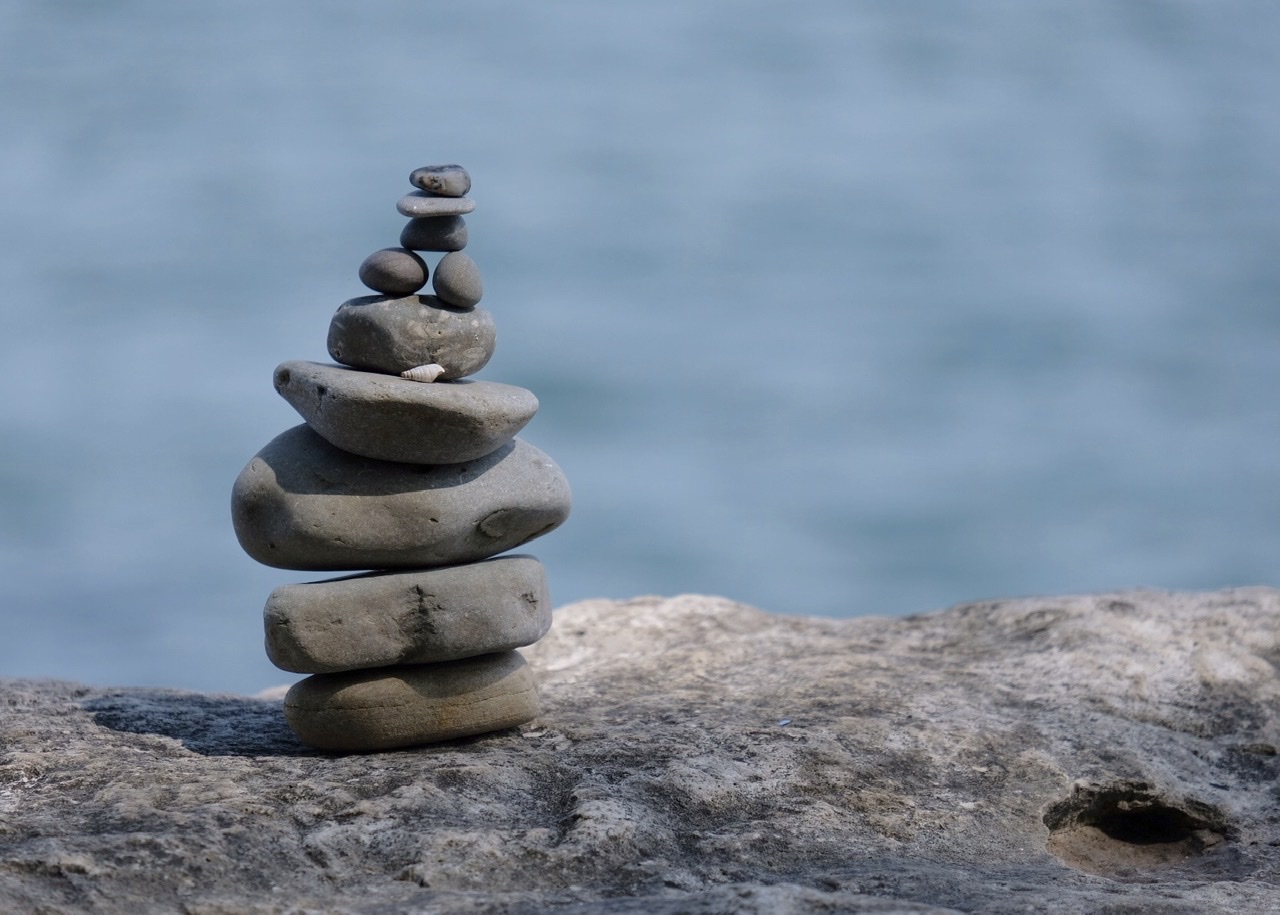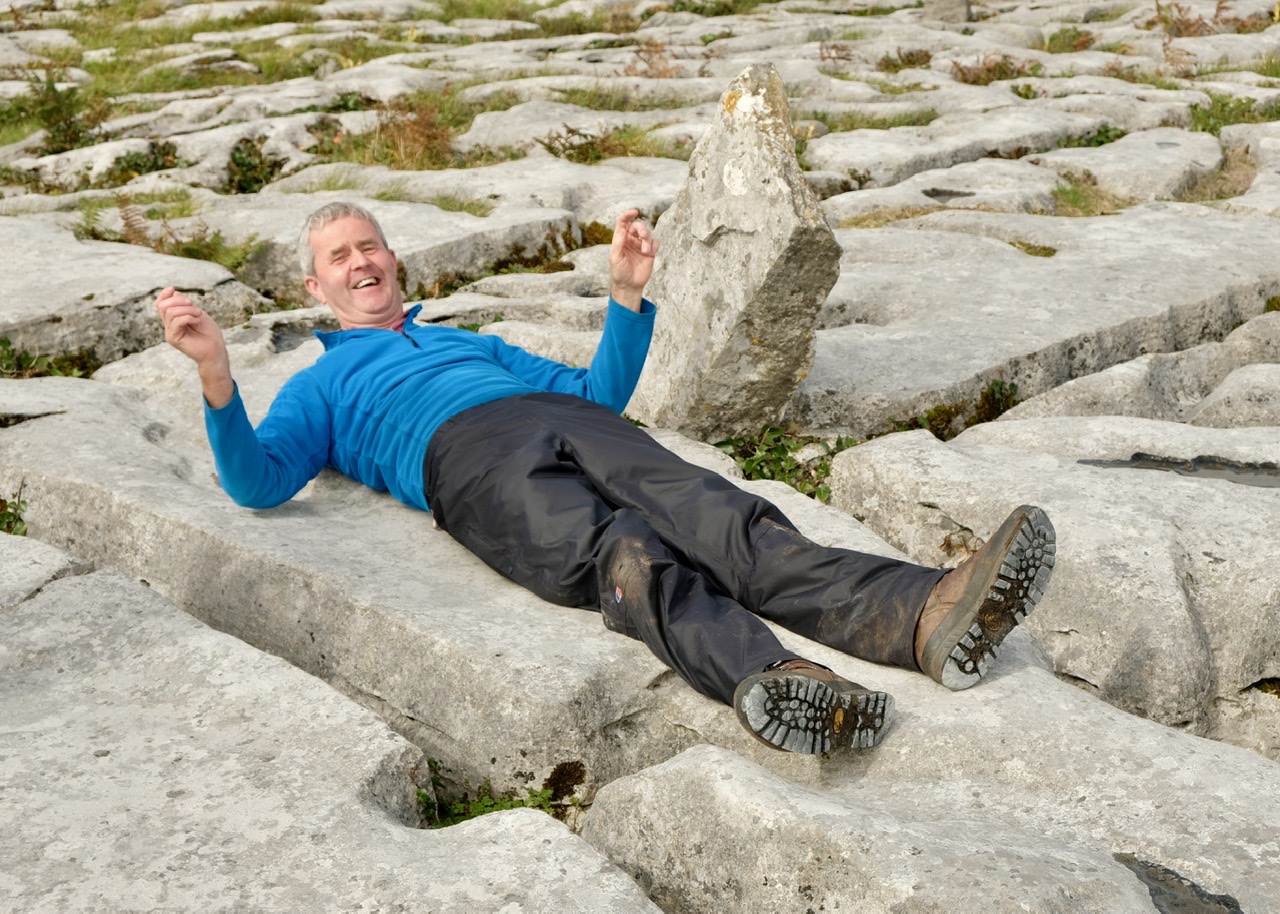
Many of us are still mostly confined to home due to the worldwide coronavirus pandemic. While we may be connected virtually to friends, family, and work we’re disconnected physically. This lack of physical touch is hard on everyone, including me. For the next six weeks, on each Monday, beginning May 4th, I’ll offer a prompt to help you get “in touch” with the place where you live, to cultivate a deeper connection with the natural world around you. To begin, let’s get grounded – with the earth, especially the solid rock and stone of your place.
Get Grounded
When we say that someone is grounded, it generally means that they’re wise and sensible, their two feet are firmly planted on the ground. They’re rooted or connected in place. Your place has evolved over billions of years and is still evolving, even though you may not be able to sense it in the moment. Therefore, it contains the geological history of your place. The past is literally embedded in the present. The rocks and stones hold wisdom.
We’re always connected with the ground beneath our feet through gravity, yet how often do we feel that connection? The ideas below will help you to do just that and will hopefully enhance your sense of well-being at the same time. Choose one or all to get grounded this week. If you’re limited as to where you can go, do what you can with what you’ve got. Sitting outside on a porch or balcony, sitting on the ground outside your back door, or walking barefoot in your yard will work too. Get creative.
What and where are the major landforms of your area? These are the hills and ranges, the valleys and basins, which have been formed over long periods of time. Visit one where you can sit or lie on a rock and experience the past in the present. It might not be the most comfortable resting place but it sure is grounding. Practice deep listening – a state of inward quietness, free from any objective. Close your eyes and imagine what it was like here thousands of years ago. Open your eyes and gaze at the rocks around you with relaxed attention (alert, yet passive). Touch them and feel their strength, hardness, texture, and temperature. Draw or photograph or write a story or poem about what comes to you from deep listening. When I was in Ireland last year, our guide in the Burren, Pius Murray, demonstrated this beautifully. He didn’t say a word, just lay down on the limestone landscape, with a look of pure bliss on his face. Here’s a variation of deep listening, a visual listening exercise from Patricia Turner.
“The weathered stones speak of antiquity – they are symbols of time. Among them I feel primal – like a speck of organic matter, a mere tuft of seaweed swayed and stirred by the motion of the waves, or a drop of salt water that evaporates, condenses and showers back into the deeps in a ceaseless cycle. I smell the briny ferment and feel renewed – and as old as the rocks.” ~ Alexandra de Steiguer, Small Island, Big Picture
Look closely at the rocks and stones in your place. Each one is weathered differently and expresses beauty in its own way (just like you). There are so many possibilities for abstract views. Photograph them and store them in a folder.
Collect unusual rocks, stones, or pebbles that you find on your wanders. Feel them in your hand – their shape, weight, texture. Look at the shades of colour. Bring a little nature inside your home. You can carry smaller stones in your pocket or display them on a shelf. For bigger rocks, you can clean them up and use them as door stops or place them in your garden or by your front door. Paint a rock and then leave it outside for someone else to find.
Create an ephemeral sculpture with natural found items – rocks, twigs, plants, etc. to mark this place and time. Here are some examples. Create a nature mandala. Or, how about an Inuksuk, piled stones or boulders. People create them along paths as they’re hiking or place them in their gardens.
Share your photos and experience wherever you post and use the hashtag #discoveryourplace. Most of us seem to be on Instagram these days and this is where I post (kimmanleyort). Below you’ll find some questions for researching the geological history of your area. This is optional, but additional knowledge may enhance your experience.
Questions to Consider (optional)
My main goal is for you to get out and experience and touch your place physically – to feel the connection. However, if you’re stuck at home and curious you may want to do some Internet research to learn more about the history of your place. This is optional. Here are some questions to consider. Google is your friend here. Search ‘topographic map’ or ‘stratigraphic map’ or ‘bedrock geology’ for your area.
How were the major landforms in your place formed? Was there a primary ecological event/process that influenced its formation? What is the evidence?
What is the fossil record for your area? What are the rocks made of? Where are the oldest ones?
Where is the nearest earthquake fault? When did it last move?
Which (if any) geological features in your area are, or were, especially respected by your community, or considered sacred, now or in the past?
What minerals are found in the ground here that are (or were) economically valuable?
**Note:** Thanks to Kevin Kelly for some of these questions.
